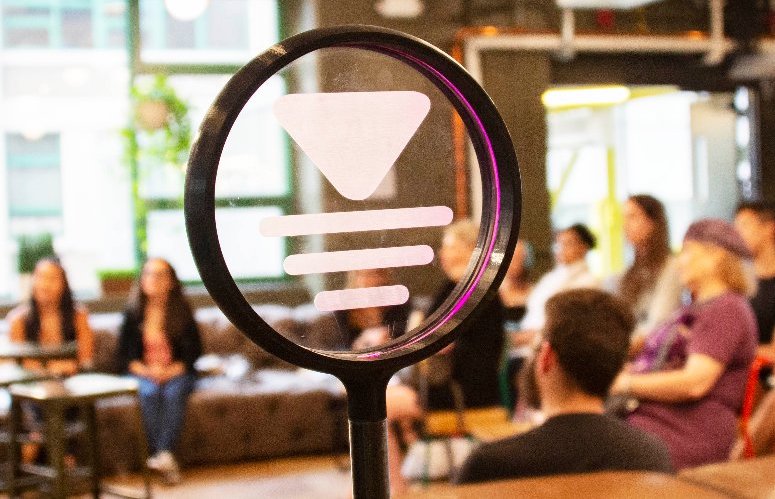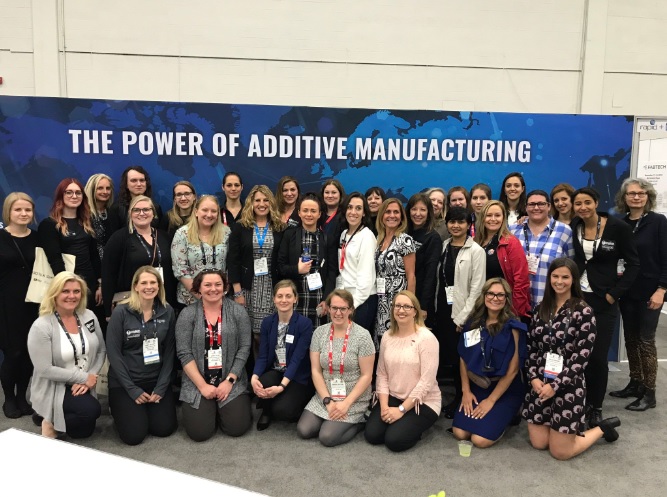Women in 3D Printing (Wi3DP), a non-profit champion of female participation in additive manufacturing, has published a report investigating the gender pay gap in the industry.
Through reports on diversity in 3D printing, Wi3DP has sought to uncover the extent of wage disparity between men and women working in the sector, as well as ways of addressing this. While the group’s findings show that overall pay inequality may have shrunk slightly, they also reveal widespread anecdotal evidence of staff being paid less just because of their gender.
“This targeted edition of the Diversity for AM (DfAM) report from Wi3DP aims to shed light on current circumstances when it comes to gender gap in AM, in particular when it comes to equal (or inequal) pay,” say the Women In 3D Printing team via their website. “The report examines available data, continues a rising conversation, and is intended to raise awareness on the need for more actionable takeaways.”
“Too often swept under the rug, the existing gap in pay levels based on nothing more than gender is a real issue in the workplace.”

Investigating diversity in 3D printing
According to Wi3DP, and the lead author of its recent report Madeleine Prior, there is now a “wealth of resources” looking into the technologies, market share, and prospective growth of 3D printing companies. However, the group says that when it comes to employment figures, these are only ever discussed in brief, and this is particularly problematic in light of the wider gap in pay between men and women.
Citing data from a 2020 study, the report highlights how women in the US are paid an average of 83 cents for each dollar earned by a white male. What’s more, when factors such as race, disabilities, and socio-economic status come into play, this inequality is statistically even worse, and data shows that the gender pay gap is smaller among young women but grows larger for mothers.
While the paper relates these issues to a myriad of societal problems, its Wi3DP authors make it clear that gender inequality is prevalent in STEM, and this is “almost certainly” born out in a 3D printing pay gap. To find out just how widespread pay inequality is in the industry, the group has therefore delved into the data and conducted a series of interviews with women in the sector, culminating in its report.

Rising perceived wage inequality
Based on data sourced from 3D printing recruitment firm Alexander Daniels Global, the Wi3DP report shows that women held a higher share of managerial roles in 2020 than 2021. During this period, for instance, the study revealed that the number of survey respondents who identified as having a ‘director’ role in their firms, rose from 3% to 23%.
However, while this trend suggests that more women are moving into higher-earning positions, the Wi3DP team says their data doesn’t prove this conclusively. Similarly, 80% of participants in the 2021 survey were men and just 19% were women, and this reflects a lack of female staff in 3D printing.
Yet, when respondents were directly asked “How Fairly Are You Paid?,” just 24% of women said they were satisfied with their wage, a significant drop against the 43% who said the same in 2020. In fact, some 40% of all the women surveyed said they felt ‘not fairly paid,’ compared to 27% two years ago, and the report highlights how this data was supported by anecdotal evidence at ‘Don’t Get Mad, Get A Bag.’
“I found out I was getting paid $40k less than a man with less AM experience, less qualifications, and less overall workforce experience.”
In the discussion, conducted as part of this year’s TIPE 3D Printing Conference, Alex Kingsbury of RMIT University and SJ Jones from Siemens Energy revealed several cases of women being paid less than men for the same role. These testimonies include multiple cases of this happening to female engineers despite their superior qualifications and experience, which the report highlights as “confirmation of wage discrimination.”
Highlighting the prohibition of coworkers discussing salaries as being a “significant barrier” to overcoming inequality, the report recommends that recruiters more openly share pay levels, leaving less room for bias. The paper also concludes by calling for further research in this area to identify potential solutions, and for dialogue to “ensure that women have a greater understanding of their own worth.”
“We are not able to conclusively uncover the precise status of the wage gap within the additive manufacturing workforce today to the point of qualitatively placing percentages,” conclude the Wi3DP team in their report. “Even so, both empirical and anecdotal evidence suggest that there is at least some discrepancy between the salaries for men and women in the AM world.”
Those interested in reading the Diversity for Additive Manufacturing Report: Differences in Pay within the Industry, can do so via the Women in 3D Printing site.
Getting more women into 3D printing
Since it was established in 2014, Wi3DP has worked tirelessly to drive greater female involvement in 3D printing, establishing a community of more than 10,000 members in 23 countries along the way. The group is accompanied by others working towards this goal, and a number of initiatives have also been launched to not only get more women into STEM, but celebrate those that have done so.
This month, for example, the Smithsonian is displaying 120 life-size statues of women STEM leaders as part of an eye-catching exhibition, which has been 3D printed in bright orange material. Launched alongside IF/THEN, an initiative designed to get more young women into STEM subjects, the exhibit is said by its organizers to be the largest collection of female statues ever assembled.
Elsewhere, dedicated 3D printing organizations have also identified and sought to address the industry’s gender gap. In the US for example America Makes has worked with the Girl Scouts of America to create a playbook for integrating 3D printing into its programming, and partnered with Ultimaker as well, to donate twenty 3D printers to young women in schools across the United States.
To stay up to date with the latest 3D printing news, don’t forget to subscribe to the 3D Printing Industry newsletter or follow us on Twitter or liking our page on Facebook.
For a deeper dive into additive manufacturing, you can now subscribe to our Youtube channel, featuring discussion, debriefs, and shots of 3D printing in-action.
Are you looking for a job in the additive manufacturing industry? Visit 3D Printing Jobs for a selection of roles in the industry.
Featured image shows a Women in 3D Printing logo. Photo via Women in 3D Printing.



